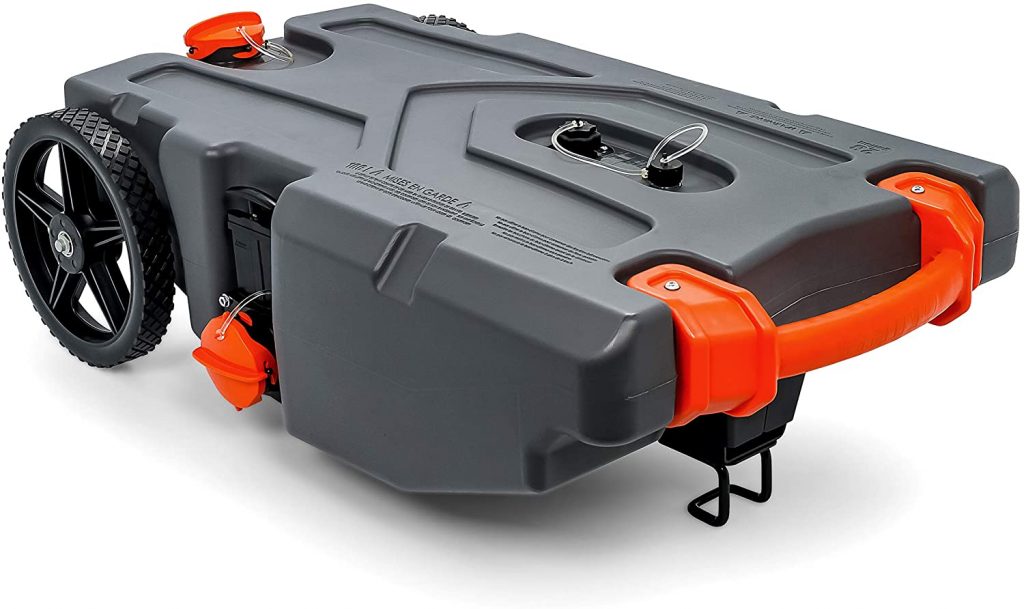What is boondocking in an RV? It’s a form of RV camping, but it’s different from the RV camping you might be familiar with.
Imagine waking up in your RV, stepping outside and seeing nothing around you other than wilderness. No buildings, no amenities, and no neighbors.
That’s the beauty of boondocking: it’s wilderness camping at it’s finest and most comfortable… in your RV!
In this article, we’re covering:
Let’s get started.
What Is Boondocking?
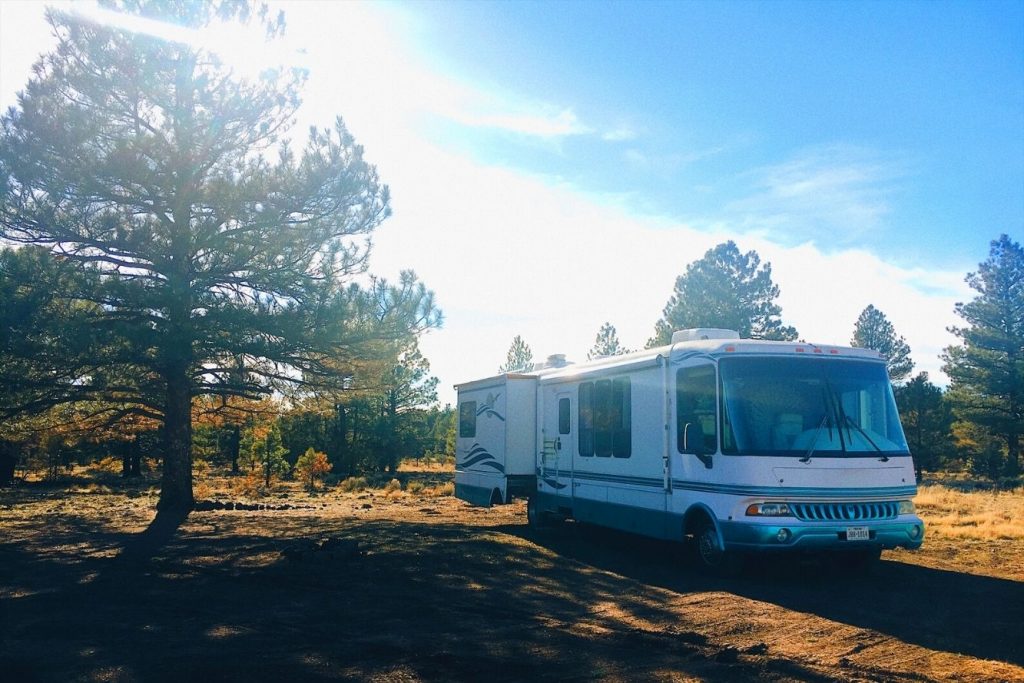
Boondocking is a type of RV camping that’s typically done in remote areas on public land without hookups. It’s also called dry camping, dispersed camping, or wild camping, or just camping off the grid.
This style of camping is done in areas where there are no designated camping spots. And the vast majority of the time there are no amenities: not even dumpsters for trash.
Boondocking is an amazing way to get out of the busy areas and experience nature in it’s raw, wild form. Usually, you have no close neighbors and get to have your spot all to yourself.
Although it’s not for everyone, it’s my personal favorite way to RV.
Where Can You Go Boondocking?
You can go boondocking on public lands like BLM (Bureau of Land Management) lands, National Forest roads and pull-outs, wildlife management areas, OHV areas, and more.
There are over 245 million acres of public lands managed by the BLM in the United States. Additionally, there are over 193 acres of forests managed by the US Forest Service.
And, unless otherwise specifically stated, dispersed camping is allowed on public lands and in National Forests.
In general, you can boondock for up to 14 days in a row on public lands.
What Is Dispersed Camping?
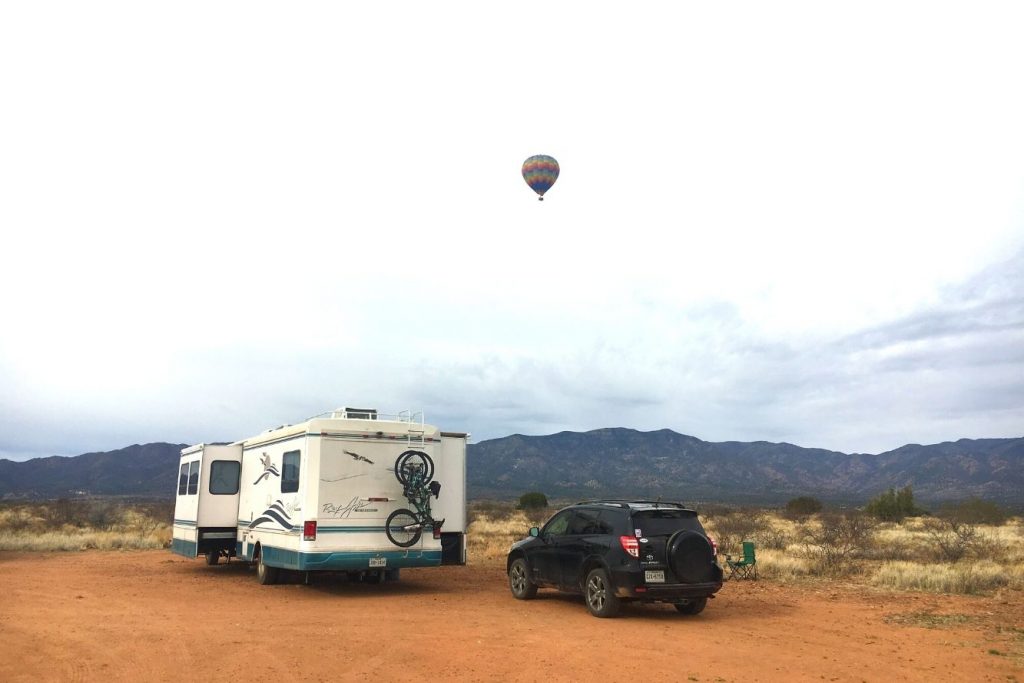
Dispersed camping refers to camping without an official designated campsite.
All boondocking is dispersed camping, but not all dispersed camping is boondocking.
Dispersed camping can be camping in a tent either with your car or by hiking in, but it can also be done with an RV in many areas.
Boondocking is the term used for when you use an RV to camp in dispersed camping areas.

Download this FREE ebook learn 60+ ways to earn an income from anywhere!
Top 4 Things You Need for RV Boondocking
When boondocking, you need to be able to generate your own electricity, deal with your own waste water and trash, and conserve fresh water.
1. Off-Grid Electricity
Most RVs come equipped with a house battery bank that runs the 12v appliances when not hooked up to shore power.
However, the battery bank doesn’t recharge on its own: it charges when the RV is plugged in to electricity. Or, for some RVs, the batteries charge when the engine is running.
When boondocking, your RV house batteries will power your 12v appliances for a few hours to a couple of days, depending on how well you conserve energy.
But you never want your batteries to drop below 50% charge because it can permanently damage them.
So, if you want to boondock for more than a day or two, you need a way to have off-grid electricity.
A generator can help you for a time. Your generator will recharge your batteries, but it’s not efficient, it’s very loud, and it burns fuel.
The most efficient way to keep your batteries charged is with a solar panel and inverter system.
Setting up solar panels and an inverter might seem complicated, but there are a ton of helpful resources online to help you understand it and put your own system together. You’ll save a ton of money doing it yourself.
I highly recommend this book: Mobile Solar Power Made Easy.
2. Waste Water Management
Next, you’ll need to be very mindful of your gray and black water levels. Every RV has different sized tanks, but for my first RV the gray tank would fill up in just 3 days with normal use.
However, I was able to stretch it the full 14 days while boondocking with a few modifications.
You will need to be mindful of how much water goes down the drain and when. Here are some tips for saving space in your gray tank.
- Do dishes on a trickle of water instead of full blast.
- Save dirty dishwater and use it for flushing your toilet.
- Shower at a gym (or outside) instead of in your RV.
- Swap your RV toilet out for a composting toilet and convert your black tank into another gray water storage tank.
For some people (myself included), being extremely conservative with your water usage isn’t fun. But breaking camp to drive to a dump station isn’t fun either!
I highly recommend getting a portable waste tank for boondocking.
With a tank like this, you can extend your time at camp. You can either use it as an extra waste water storage tank, or use it to empty your tanks and then drive it to a dump station instead of your whole RV.
3. Plenty of Fresh Water
You will need plenty of fresh water for boondocking: up to 14 days worth, depending on how long you want to camp.
Most people’s fresh water tanks hold a lot of fresh water.
However, if you find that you need more fresh water, there are a few different kinds of fresh water storage containers you can get.
Many RVers who drive trucks like this truck-bed water bladder because they can use it to refill their fresh water tank while dispersed camping.
4. Garbage Management
Last but not least, you need to contain your own trash and dispose of it properly.
This might mean driving it into town or holding onto it until you’re done camping at that spot. Never leave your trash behind!
Boondocking Does Have Some Rules
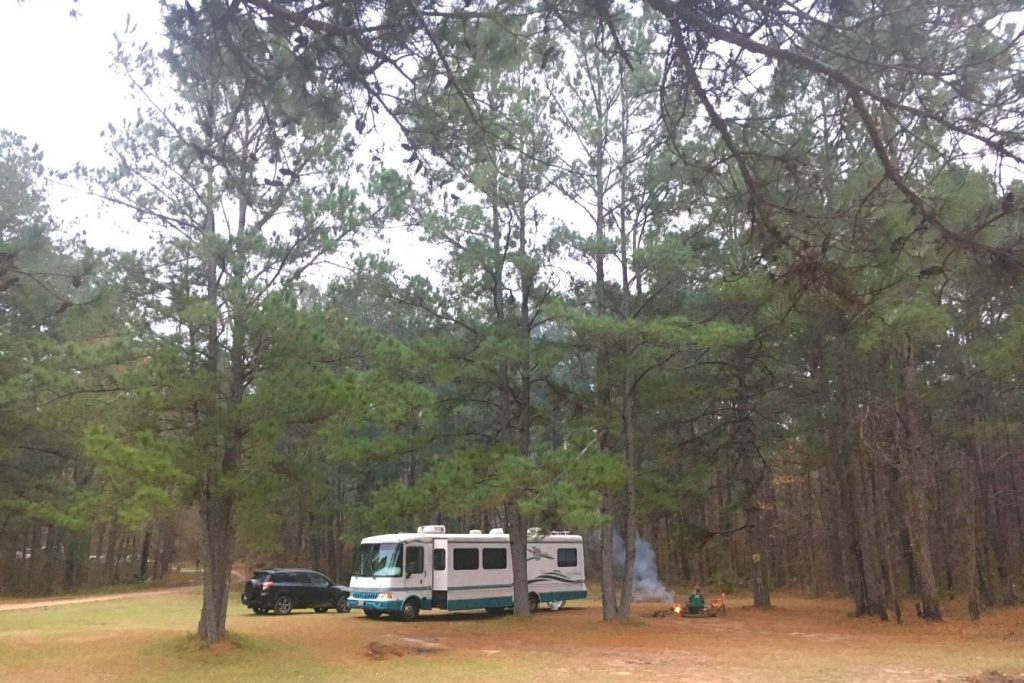
While boondocking is free camping where you often won’t see another soul, there are some rules.
Rule 1: Stay Limits
First of all, each place has a stay limit. Although that limit is generally 14 days on public lands, you should check the website of the managing office.
If you can’t find a website, call the local BLM or US Forest service ranger station and they will be able to tell you.
Responsible Camping Rules
The following rules are more etiquette-based and have to do with just being a responsible camper.
How to Find the Best Free Boondocking Spots
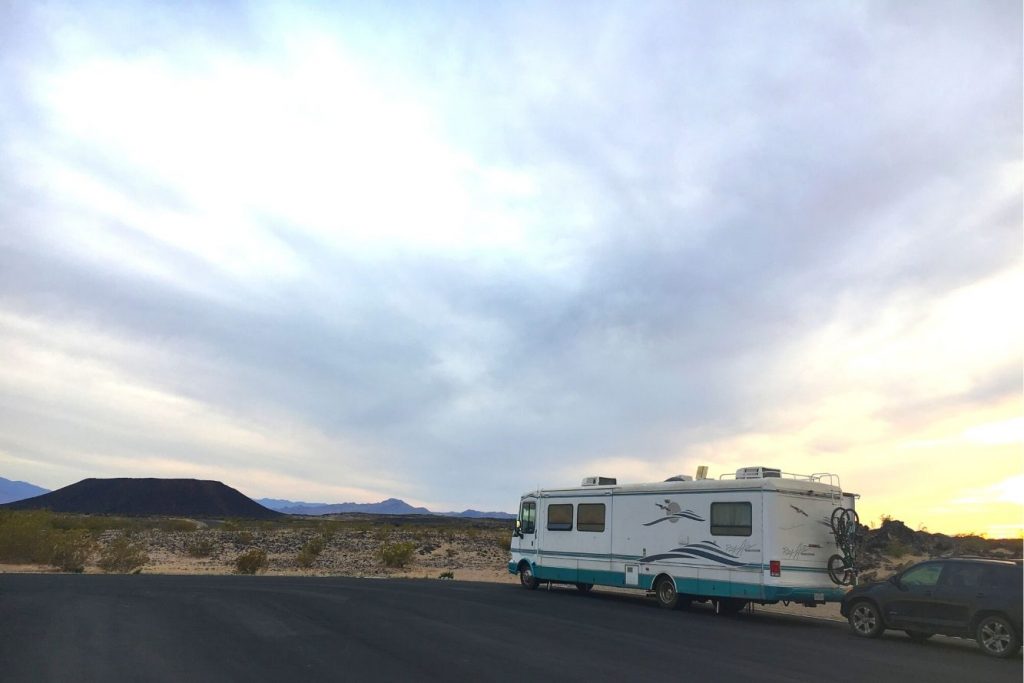
There are plenty of apps and websites you can use to find the best free boondocking spots.
Personally, I recommend using these:
On these websites, you can read real camper reviews and find out the road conditions, campsite conditions, cell phone signal, and much more.
My Personal Secrets for Securing the Best Spots
Finding great boondocking spots requires much more than finding a place online and heading out there.
You need to be sure your RV will fit in the campsite and that the roads are passable. Some roads into boondocking spots can be really rough and very small, with nowhere to turn around in an RV.
My first RV was a 36’ motorhome, here’s what I did to scout and find the best RV boondocking spots.
- Find a great looking boondokcing spot using apps and websites.
- Scout the roads and potential camping sites using Google Maps Satellite View.
- Have a backup campsite plan (or 2) just in case, using the same methods.
- Head out to the location in my car first (if possible). If not, I would park the RV in the nearest parking lot and take the car to scope out the spot first.
- Take the car to assess the road, potential camping sites, cell signal, views, and turnaround spots.
- If I found a spot I want to camp in, I set up a tent and a camp table that I keep in the back of my car to ‘hold’ the spot while I go get the RV.
RV Boondocking Essentials
Here are some RV boondocking essentials for your next boondocking trip.
- Portable Waste Tank.
- Fresh water storage container.
- Solar shower.
- Jackery solar power station.
- Solar powered camp lights.
- 12v fan.
- Propane space heater.
Boondocking FAQ
Here are the answers to some of the most common FAQ about boondocking.
Is Boondocking Legal?
Yes, boondocking is perfectly legal as long as you camp in an area designated for the activity.
Is Boondocking Safe?
Yes, boondocking is safe. If being alone out in the wilderness makes you feel unsafe, just try it for one or two nights at a time close to town. As you get comfortable, you can extend your trip length and distance.
What Do You Need to Boondock?
You need off-grid power, plenty of fresh water, and a plan to manage your waste water and garbage responsibly.
How Long Can You Boondock in an RV?
Most public lands boondocking spots will allow you to boondock for up to 14 days at a time. However, how long you can personally do it is dependent on your own skill and comfort.
I recommend starting with just one or two nights and extending your trips by a day each time you go out. It’s a learning process.
Are There Different Types of Boondocking?
Depending on who you talk to, you might hear terms like dispersed camping, dry camping, moochdocking, lot-docking, boondocking, wild camping, and more. Here are some quick definitions, although they can be interchangeable depending on who you ask.
- Boondocking: free RV camping without hookups in remote wilderness areas on public lands.
- Dry Camping: RV camping without hookups. This can be on public lands, in a store parking lot, or a primitive campground with no amenities.
- Moochdocking: dry camping for free in someone’s driveway.
- Lotdocking: dry camping in a public parking lot.
- Wallydocking: dry camping in a Walmart parking lot.
- Dispersed camping: dry camping on public lands with no designated campsites.
- Wild Camping: dry camping or off-grid camping in remote wilderness areas.
What Is Boondocking? Final Thoughts
If you’ve made it this far, I hope you’re not still asking “What is Boondocking?” – and if you are, have a re-read!
Boondocking is camping without hookups on public lands. It’s legal, free, and so much fun once you get the hang of it.
If you like the idea of experiencing raw nature and having it all to yourself, I highly recommend giving boondocking a try.

Carrie Wilder
Carrie has a passion for location independence and nomadic lifestyles. After traveling full-time in an RV and living the van life, she created Making Money and Traveling to help others make the switch to a remote lifestyle. Learn more about Carrie on the About page or connect on social media below.
Download this FREE ebook learn 60+ ways to earn an income from anywhere!
